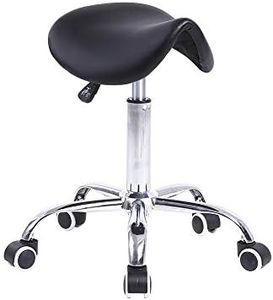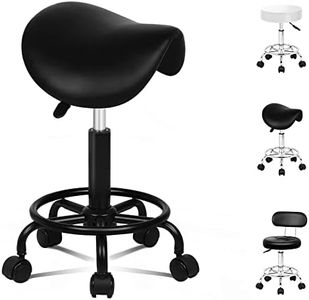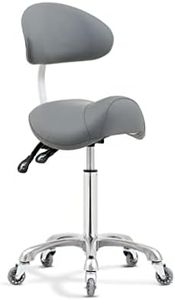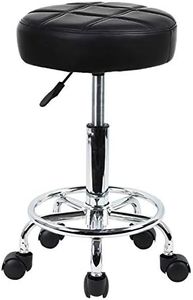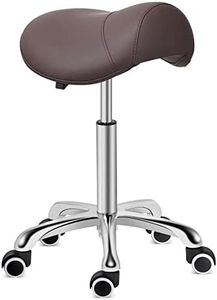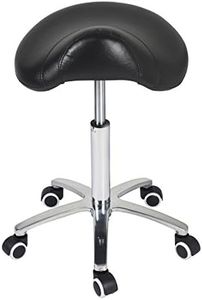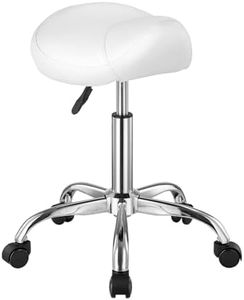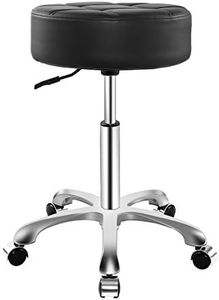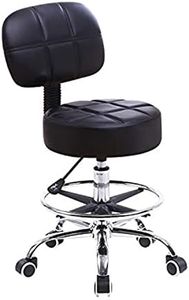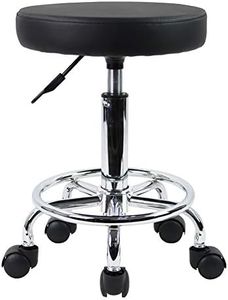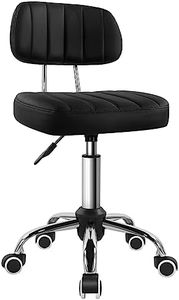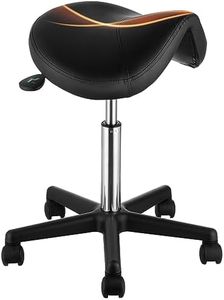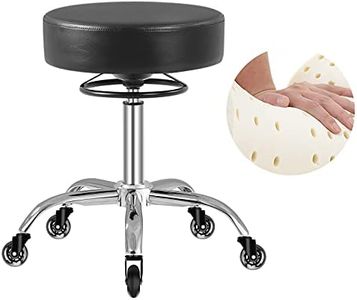We Use CookiesWe use cookies to enhance the security, performance,
functionality and for analytical and promotional activities. By continuing to browse this site you
are agreeing to our privacy policy
10 Best Rolling Stool
From leading brands and best sellers available on the web.By clicking on a link to a third party's website, log data is shared with that third party.
Buying Guide for the Best Rolling Stool
Choosing the right rolling stool can make everyday tasks easier, especially if you need mobility and support whether at work or home. Start by thinking about where and how you'll use the stool: in an office, a workshop, a salon, or maybe for crafts at home. Your workspace influences what features you'll benefit from most. It's important to balance comfort, stability, and adjustability to suit your needs, so you can work or relax comfortably and move around smoothly.Seat Height AdjustmentSeat height adjustment refers to the range at which you can raise or lower the stool to fit your comfort and work surface level. This is important because using a stool that is too high or too low can strain your back, legs, and arms. Height ranges are typically categorized as low (around 16-20 inches), medium (20-26 inches), and high (26-32 inches or above). If you're using the stool at a standard desk, a low to medium range will usually suffice. For higher counters or medical/drafting purposes, you may need a high adjustment range. Choose a height that allows your feet to rest flat on the floor or footrest, with your knees at a comfortable angle.
Seat Cushion Thickness and MaterialThe seat cushion thickness and material affect overall comfort, especially during long periods of use. Thinner cushions (about 1-2 inches) might suffice for short-term tasks, while thicker cushions (3 inches or more) provide more comfort for extended sitting. Materials can range from simple vinyl (easy to clean, firmer feel), to fabric (softer, may stain), and leather (more luxurious, durable). If you'll be sitting for longer periods, opt for a thicker, supportive cushion in a material that's comfortable and practical for your environment.
Mobility and Wheel TypeMobility depends on the wheels (casters) attached to the stool. Some stools have hard plastic wheels best for carpeted areas, while soft rubber or polyurethane wheels are better for hard or delicate floors to prevent scratching. There are also lockable wheels for extra stability when you need the stool to stay in place. If you move around a lot or need to switch between workstations, go for smoother gliding, non-marking wheels suited for your floor type. If you want extra safety or stability, consider stools with lockable or larger-diameter wheels.
Weight CapacityWeight capacity indicates the maximum weight the stool can safely support. It's essential for both safety and durability. Typical rolling stools support 200 to 300 pounds, but heavy-duty options can handle more, up to 400 pounds or above. Choose a stool that comfortably exceeds your weight and consider any extra load you might carry or use on the stool, especially in professional or workshop environments.
Backrest and Armrest FeaturesSome rolling stools include a backrest for lumbar support or armrests for added comfort and support. If you'll be seated for longer periods or need extra back support, choose a stool with an adjustable or ergonomic backrest. Armrests are rare but can be helpful if you need support when getting up or sitting down. If you're looking for more freedom of movement and easier access to your workspace, a backless stool might be the right choice.
Base StabilityThe base of the rolling stool is the foundation that keeps it stable. Wide, five-legged bases provide the best stability and balance, reducing the risk of tipping over, especially when moving around. Smaller or four-legged bases might suit lighter tasks but can be less stable. Consider a stool with a sturdy, wide base, particularly if you'll be using it on slippery surfaces or need to move around frequently.
